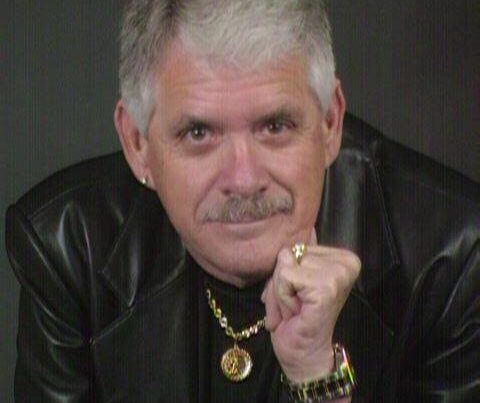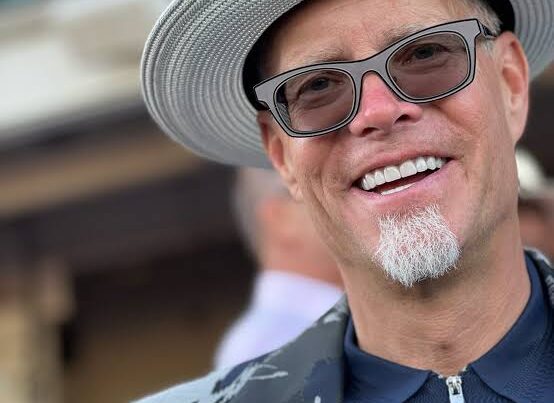Podcast: Play in new window | Download
Subscribe: RSS
What are leading business game changers doing to sustain their social mission and purpose for good?

Andrew Hewitt
For more than a decade Andrew has been uniting the Game Changers of our time to evolve economics and address the systemic challenges we face.
In 2010 Andrew set out on a mission to showcase a new standard of success in business, which led to the publication of GameChangers 500, a ranking of the world’s top mission-driven businesses. Through this extensive research initiative, Andrew became a sought-after expert in what differentiates high-performing purpose-driven organizations. He was featured in news media around the world, and earned a seat on an advisory council guiding federal legislation within the U.S. government.
Purpose-driven pioneers like Patagonia, creators of tribe-like cultures such as Zappos, and cause champions like TOMS are among the organizations Andrew has studied and worked with through his journey. He has also supported century old corporations such as Kraft Foods in learning how to lead with purpose and has been referred to as a “purpose sherpa” for executives at large corporations.
By 2016 Andrew had witnessed many of the organizations he had praised as “best in the world” slip back into traditional profit-driven behavior. Using Game Theory as a guide, Andrew began extensively exploring what it takes to truly “change the game”, recognizing that behaviors in business are primarily driven by what we measure and how we motivate. His latest research is focused on evolving economics from win-lose to win-for-all outcomes.
He serves as an Entrepreneur in Residence Emeritus at UC San Diego, is on the board of the Pachamama Alliance, and addresses a diversity of audiences including students at the United Nations University for Peace, CEO’s of Asia’s largest banks, government officials in the U.A.E, and everything in between.
What We Discuss With Andrew Hewitt
- What is a business game changer
- Why do mission-driven companies slide back into a profit at all costs model
- What to consider before you start a movement
- How to sustain lasting change using game theory
- The importance of recognizing how culture is driving the status quo
Key Takeaways
How do you define a game changer?
There are a lot of buzz words out there – game changers, change makers, social entrepreneurs, whatever we want to frame it as.
I deliberately use the word GAME. There is change you can make within an existing game or system but when you change the game that’s when the larger behavior change happens.
Games have common elements – they have an objective, point system, training mechanism, how you train for the game, and how you reward.
So game changing to me is a higher level of change.
In this vast collision of crises what we need is vast behavior change, moving beyond incremental change to a game change.
A game changer is committed to that level of change. They are committed to the broader system level change, and realize that often the problems we’re trying to solve are symptoms of a larger problem.
In ranking Game Changers, what was some of the criteria you looked for?
Game Changers 500 is a ranking of companies. It was a process of finding the leaders behind those companies who I call the game changers.
The companies are for-benefit, mission-driven, name your buzz word. But there was a very clear threshold that we were looking at that made this different from other “great places to work” lists. It involved organizations that prioritized a purpose or noble mission over just making money.
We looked beyond legal structure. Often we fall in this middle space between a for-profit and a non-profit. Whether they’re a for-profit or non-profit, what they have in common is that they generate revenue and have business activity but they’re giving priority to a mission.
Guayakí, whose mission is to restore 100,000 acres of forest in South America, figured out that growing Yerba Mate in the shade of these forests would allow these forests to survive because they’d be more economically viable to keep than to cut down. They sell that Yerba Mate to people in America and around the world who drink it as an alternative to tea or coffee. It’s a phenomenal example of a mission-driven company, with phenomenal ethics across all their practices. But they’re really giving priority to that specific purpose. That’s why they exist and they are absolutely clear on it.
How do you know they are giving priority to a mission? What are the indicators?
So there are a lot of practices here. One from the non-profit space is called the theory of change. That’s a clear strategy that defines how your mission will be realized and measured, and the mix of products and services.
Here’s where we want to go, here’s our strategy, and here’s our impact indicators. That’s a common theme we saw. Another was a yearly impact report. B-Corp certification is another indicator.
We also looked at other indicators, like how they treat their employees, customers, community, and environment – all stakeholders.
What inspired you to do this?
One was waking up 12 years ago to the collision of crises we’re facing. It was clear that the environment was being devastated and there was massive social injustice.
I watched so many of my classmates coming out of university climbing the ladder in different corporations and really feeling miserable and depressed. The bright lights of talent – we were told we were the leaders of tomorrow – feeling dull and disenchanted at this profit at all costs mentality. I thought, “What a waste of talent”, and they were powering some of the most destructive companies.
That led me to a deep inquiry about what we could do about it. That’s when I started looking at game theory and what changes behavior at large.
Do you think some companies lose sight of their original mission for the sake of stakeholder earnings and business growth?
Great question – it’s why we stopped doing the rankings. I feel we accomplished our mission. 12 years ago, it wasn’t very well known. Social enterprise and B-Corps were just starting.
We sought to popularize it and create an alternative to the Fortune 500. Now every university on the planet knows that there is an alternative to the non-profit path. I played a small part in that but now every university in the world is teaching social entrepreneurship or how to run a mission-driven company.
The other thing that happened in terms of what the movement needs next, is exactly what you’re speaking to here.
What I noticed is that a lot of the companies that we ranked as best for the world over time as they grew, started to slide back to more profit-first capitalism.
That frankly was really challenging and put me in a bit of a spin. It’s still an inquiry that I’m in.
One example is Whole Foods. It was a phenomenal example in its early days as it grew, doing all the right things. As it grew it got more and more called out, which is not uncommon. Now it has been sold to Amazon. There’s always a story behind the story but I would say that that was not the intended outcome.
We see this also with Tom’s Shoes. It was such an early model of this whole buy one give one movement. As they grew they did all the right things in terms of interviewing partners, and then Bain Capital came in and took a majority share in the organization. The performance of the company has really plummeted since then.
And if it’s not that, it’s the next healthy food company that sells to a big packaged goods company like Nestle or Unilever, and then struggle to keep their culture and purpose first.
So where we’re at in the movement is how you actually sustain change in the game.
What are you finding in your inquiry so far in terms of how companies are able to sustain their purpose and culture?
This is where game theory comes in particularly useful. When we look at it through the lens of a game, I like to look at it as level one – the win-lose model of capitalism. Within the game there are six game aspects. There’s an objective, how you make choices, how you develop the players, how you motivate people, how you assess performance and how you distribute benefits.
At level one, there’s profit first; choice-making through command and control leadership, developing people is really training them for roles and results, motivation is based on incentives to maximize profit, therefore we assess performance based on short-term profit, and benefits are typically concentrated among owners, executives and investors. That’s a particular game, but it’s creating a lot of harm in the world.
Then there are companies who say, “We want to play a different game”, but they don’t create change in all of these areas. What they often do is add a purpose, mission or values, but they don’t change the motivation system or they don’t change what they actually measure, or they’re still keeping benefit really concentrated. So they have a hard time actually sustaining that change because these six aspects work as a closed loop.
Purpose has become the new trendy buzzword, but it’s not a marketing a strategy, which is often how companies approach it – getting the tagline right, and figuring out their societal role.
So if level one is a win-lose game, level two is a win-win game, where you start to see a change in all six of these game aspects.
That’s changing the objective from short-term profit to accomplishing a noble mission. That’s changing choice-making from command and control leadership to a more empowering and empathetic leadership. That’s not just developing people for roles and results, it’s more for personal excellence and innovation. In terms of motivation, it’s going from incentives that maximize profits towards incentives to maximize and achieve financial, social and environmental goals. Then of course measuring a triple-bottom line not just a single bottom line, and distributing benefit to more of the value creators with commitments to ethical minimums like fair trade and living wage.
So in the face of new capital coming in and new employees coming in, as long as they stay focused on all six of these game aspects, staying at level 2, they’ll be able to have high performance and be able to scale.
What do you do when the core product of the company is actually part of the problem?
You tell the truth, it’s that simple.
KLM was trying to figure out how to do the right thing and be environmentally responsible. They realized if they did a whole campaign around using recyclable cups it would sound like a joke in the face of being an airline that’s creating more C02 than any other industry. So instead, they told the truth that flying does create a major tax to the environment. So fly less and take the bus. They made a whole education campaign about other ways you can travel, and then talked about some of the other things they were doing.
I think there’s something really beautiful about humbly recognizing that we all have a role to play.
What causes game changer companies to slip down?
One way is they are growing and they need to raise capital. It’s not startup capital from friends and family who believe in their mission, it’s capital that often creates a restructuring of the organization. It sends them into certain agreements and expectations.
The traditional model is to go public or have some sort of exit event to be able to pay back the investor. You can pay out a dividend but that’s not what investors are looking for.
So this is the difference between a finite game and an infinite game. In a finite game you play to win and to get to a particular outcome. The infinite game you play for the sake of enjoyment, because you want to play. It is purpose-driven and creating more joy for all life.
That’s one of the shifts in mindset that I believe the world is ready to see. Our whole system around these companies is built to support these finite games. But to create meaningful work environments and be able to sustain purpose within organizations we have to shift to an infinite game.
So how money is raised has a big part to do with that. The second one is the founder, who is like that initial seed. The values, vision and mission is often within them. As they grow, more seeds germinate around them and they create a little team in this garden. They are surviving where there’s often drought, a lack of capital, or attack from competition. They have to duplicate themselves enough and have to have a strong culture that’s aligned with the vision and values. Eventually the time comes though, when other species come into the garden and take over what the original seed intended to do.
Or the founder leaves and they say, “This isn’t my role anymore.” So the organization is now missing the inspirational visionary leader and it’s back to traditional business – profit at all costs.
There are other models. If you can, get out the equity-based investing. Crowdfunding is a phenomenal model. I’m also really excited about blockchain and token sales – pre-purchasing the token that you eventually use to purchase the product.
Revenue-based financing is another one that works for some types of companies. It’s often called a revenue loan where you’re paying back investors from topline revenue.
What’s the problem with everyone wanting to start a movement?
One of the shadows of movements that I’ve experienced is asserting your view of the world on others and leveraging good communication technology – meme creation. There’s a whole science called memetics which is basically how you get ideas to spread and hook the human psyche.
I think it’s much more useful for society to nurture people’s capacity to sense into what’s meaningful and act from that place rather than trying to convince people.
It’s a charismatic leader who is able to enroll people into a view that they’re just repeating rather than being supported and coming to their own truth and finding their own sovereignty and voice.
If someone does want to start a movement, what are some things that they need to consider before launching?
The first step is to tune into the source of the energy within you. Often it’s anger – wanting to have an outlet to express rage. It can therefore be repeating the same pattern. The minute we’re pointing the finger, we’re doing the same thing. We’re continuing the story of separation and putting the same energy imprint into the world.
It’s okay to have anger and have the need to release that. And it can be a slippery slope when you create a container called a movement. It becomes a release container for projecting that anger onto someone or something else.
I think it would be much more effective to support that person in processing that anger, rather than putting it on someone else and creating this ping pong match of ‘us against them’.
Step two is asking if there’s a more fundamental problem. So often we rally around something which is really just putting on a band aid on a more core issue. With a little more inquiry and introspection we can go deeper into discovering what is actually at the root of this.
The deeper we go into that, we find there’s more work to do within ourselves. And that’s really the work. So often we get fascinated with all the change we should make in the world on the external. Yet all we’re doing is shuffling deck chairs on the Titanic. So we can distract people from doing the healing work that is meaningful, by creating a flashy movement that makes people feel like they’re really doing something when they’re really just putting a band aid on the system.
There’s a great saying that, “Often we’re polishing the mirror only to discover that the dust is on our face.”
I think something we can all be doing more of is the deep inquiry into ourselves. Who are we being in all of this?
It’s not to say that we don’t do movements. I think the movement to do is coming together in a heart-space and meeting in the truth of our unity. It’s like a remembrance, and it’s from that space that meaningful change can happen. Otherwise we’re using the same raw materials that are the issues that we’re facing.
To allow a new transformational energy to come out of us, we need to do the deep transformational work within us. That’s the deep work. That’s being willing to let go of the things where we might get some recognition or ego-gain but some part of us knows that that’s not it. There’s often a letting go of identity or a project.
It’s the personal transformation that starts all transformation in the world.
Talk to us about culture
That’s an important word. A fish doesn’t know it’s swimming in water. Often we don’t realize the culture that we’re swimming in and how that culture is reinforcing a certain behavior.
I was just in India for two and a half months. It’s beautiful and so clear that their culture is producing a different type of behavior among people. There’s a deep sense of connection and joy. There isn’t this hyper-individualism or individual drive that is in the west and that creates this drive to be a thought leader. And when you power that with social media and the technology we have, you get a rampant growth in the “I” – having a way to show how special this is to the world. Which I think is a real dysfunction in culture.
Why are there more people being depressed every year where people feel disconnected from each other?
You have a culture that’s breeding individualism, combined with the technology that’s exasperating it, and there’s no way for that culture to create transformational change in the world. It’s enabling innovation and driving something into existence. Which is perhaps the role of the west.
But if we are truly going to get out of this leaky canoe that we’re in together, there’s a coming together, a recognition that there’s an aspect of the culture that we’ve grown up in that has created the dysfunction that we’re facing.
The irony for a lot of progressive leaders is that it’s hard to see because you’re being praised for doing all this good work. You’re winning awards maybe and being elevated for all this social change, but it’s not the level of change that’s necessary.
It takes getting outside the bubble and asking, what is it that we’re not seeing? Obviously it’s not working. Here we are in 2020, with climate change, political unrest and instability – all these things seems to be accelerating.
If you ask people if they think we’re getting out of this, the answer is no. There’s deeper confusion and concern. It really is necessary for us to see that the dust is on our face.
Episode Resources
- Game Changers 500: https://gamechangers.co
Connect With Andrew Hewitt
- LinkedIn: https://www.linkedin.com/in/andrewdhewitt
- Facebook: https://www.facebook.com/GameChangers500
- Twitter: https://twitter.com/a_hewitt
Did You Enjoy The Podcast?
If you like this episode let us know! Reviews for the podcast on iTunes are greatly appreciated. This helps us reach more entrepreneurs seeking to make a positive impact in the world. If you received value from this episode, it would mean so much if you could take a moment and leave your 5-star rating and review. You can do that by visiting here. Thank you! Together we can make a difference!
Additional Episodes You May Like
- 326: Safwan Shah: Providing Faster Paycheck Access for American Workers
- 320: Norman Wolfe: Transforming Your Business Into A Living Organization
- 296: Jeff Gothelf: How To Make The Pace Of Change Your Competitive Advantage
- 242: Paresh Shah: Lifter Leadership and a New Model of Business
- 263: Vishen Lakhiani: Facilitating Global Transformation in One Generation
- 214: Jim Jubelirer: Exponential Mindset – How To Thrive As The Pace Of Change Increases
- 209: Ron Carucci: Powering Your Transformation Journey










